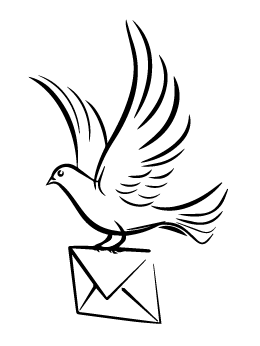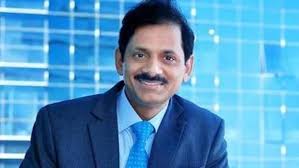IDFC First Bank managing director and CEO V Vaidyanathan said that the microfinance loan book is the lender’s ‘first big isssue post-merger’ but expressed confidence that the ‘rest of the story’ on the credit and deposit side is ‘moving in a positive direction’.
Though in FY26 the total loan book will continue to grow by around 20% and deposits by 24% to 25%, the stress in the microfinance segment would affect the bank’s income line in the next financial year. The reason why the income will not grow directly in proportion and could grow by about 14.5% is that the microfinance portfolio is a highly profitable business with the bank lending at 24% to the segment and the cost of funds being at 6% to 7%.
Due to the trouble the sector is currently facing, IDFC First Bank is bringing down its microfinance book, which was 7% of the total credit a couple of quarters back. As of 31 December 2024, the outstanding in the microfinance book is around Rs 10,900 crore.
“The impact of the withdrawal symptom of not doing that high-yield book (microfinance) is also coming in the form of income line. So that is the reason why we expect the FY26 income line to get affected,” Vaidyanathan said.
Vaidyanathan, however, expects the stress in the microfinance sector to peak in the exit quarter of the current fiscal and by the third quarter of FY26 there would be a ‘reasonably sharp upward movement of operating profit’. “For those of you who are going to be with us until that time and see how the room is turning, you'll be able to see how the margins are expanding,” Vaidyanathan told analysts in a post-earnings call.
The microfinance stress, Vaidyanathan emphasised, is a temporary situation and it will go. It is a ‘bit of an industry accident’, not faced by IDFC First Bank alone but by all the banks.
While turbulent winds hit the microfinance sector and tend to slow down the income growth, the good news is that IDFC First Bank’s operating expense is declining after the introduction of several initiatives. The target is to not let opex grow more than 13-odd per cent, down from 18%. “You will see it every quarter. You can see it Q1 to Q1 year-on-year, Q2 to Q2 of this year, Q3 to Q3 of this year. Our opex growth in Q1 FY25 was 21.1% YoY; in Q2, it was 17.7%; and in Q3, it was 16.1%. So our opex is stabilising and definitely coming down,” Vaidyanathan told analysts.
That was not the scenario three years back when the opex was growing by 30-odd per cent and income was growing by 30% to 32%. Now, in the first nine months of the current fiscal, the opex has grown by 18.2%, but the business of the bank has grown by 25%. This meant deposits growing by 28% and the loan book by 22%. When opex is growing at 18% and the business by 25%, you know that this bank is now beginning to build serious leverage,” said Vaidyanathan.
The bank is planning to further bring the MFI (micro finance institution) exposure down to even 4% of the loan book, besides starting cleaning up the bad assets. The book would largely be insured by that time. “So we expect that from there on, MFI shouldn't give us trouble,” Vaidyanathan said.
After the microfinance business stabilises and the lower base is achieved in FY26, the bank would be on course to achieve its guidance given for FY29 with the loan book at Rs 5 lakh crore, deposits at Rs 6 lakh crore, NIM at 6% and ROA at 2-odd per cent.
“While one item (MFI) got stuck somewhere in the centre, every other single business of ours is doing well. Our home loan has not troubled us. Our loan against property has not troubled us. Our used car has been behaving perfectly well. Our personal loans is doing perfectly well. Our credit card is doing perfectly well. Our micro enterprises business such as financing Kirana shops and salons is doing perfectly well,” Vaidyanathan told analysts.
Vaidyanathan explains how the bank is shaping up the right way. Broken into three parts, the first is the entire lending business. Retail, MSME (micro, small and medium enterprises), rural and corporate are all put together as one family. “Now on that front, we are having 4.3% of the loan book as an operating profit. This includes MFI by the way. So before the MFI crisis struck, it was 4.7%. We actually expect it to go to 4.8% or 4.9% because of operating leverage. But, of course, it's come down to 4.3%. But still there's nothing bad about 4.3%, it's pretty good actually. And we believe this should go up even as our loan book grows from Rs 2.2 lakh to Rs 5 lakh crore,” said Vaidyanathan.
On the second line is the liability business. “You must expect us to take the loss to zero, which is cost-to-income ratio coming down to 100%,” said Vaidyanathan.
The credit card business, which made a loss of Rs 300 crore last fiscal, is also expected to make a net profit of Rs 500 crore in the next 4 to 5 years, with the break-even point in FY26.
“The good news is that neither on the retail or wholesale front, we have put one foot wrong on credit. Today, we tick all the boxes except the cost-to-income ratio. Once we see the back of the MFI issue, I'm not expecting to have any problem in any other business. Once the bases are met in FY25 and FY26, then I'm looking at a good story after that,” Vaidyanathan summed up.







